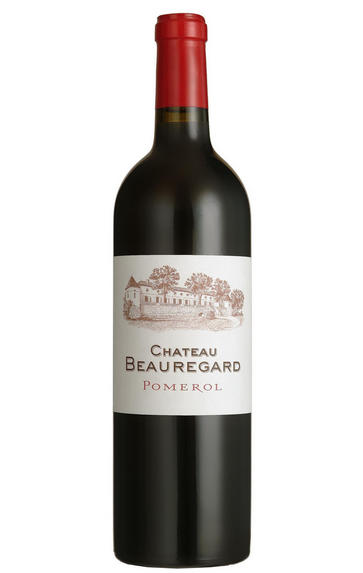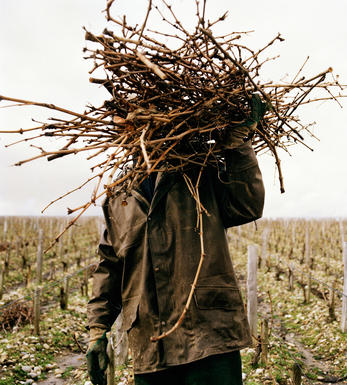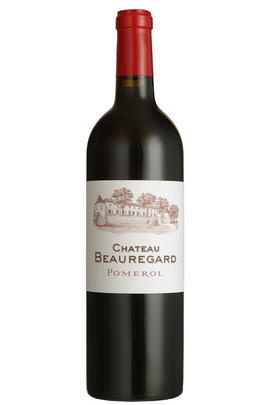
About this WINE

Chateau Beauregard
Château Beauregard is one of the few Pomerol properties to actually have a château, a distinctive and classic 18th century building that was designed by a pupil of Victor Louis. Beauregard has had several owners and in 1991 it was acquired by Crédit Foncière, which also owns Château Bastor-Lamontagne in Sauternes.
Beauregard is located just outside the village of Catusseau, opposite Château Petit-Village. Its 17 hectares of vineyard are planted on soils rich in gravel - consequently, the wine has a higher proportion of Cabernet grapes (Cabernet Franc 35%, Cabernet Sauvignon 5%) in its blend than most Pomerols.
The grapes are fermented in temperature-controlled, stainless steel vats and the wine is matured in oak casks (70% new) for 18 months. Quality at Beauregard has improved significantly since 1991 and winemaker Vincent Priou is now producing finely crafted and supremely elegant clarets.

St Émilion
St Émilion is one of Bordeaux's largest producing appellations, producing more wine than Listrac, Moulis, St Estèphe, Pauillac, St Julien and Margaux put together. St Emilion has been producing wine for longer than the Médoc but its lack of accessibility to Bordeaux's port and market-restricted exports to mainland Europe meant the region initially did not enjoy the commercial success that funded the great châteaux of the Left Bank.
St Émilion itself is the prettiest of Bordeaux's wine towns, perched on top of the steep limestone slopes upon which many of the region's finest vineyards are situated. However, more than half of the appellation's vineyards lie on the plain between the town and the Dordogne River on sandy, alluvial soils with a sprinkling of gravel.
Further diversity is added by a small, complex gravel bed to the north-east of the region on the border with Pomerol. Atypically for St Émilion, this allows Cabernet Franc and, to a lesser extent, Cabernet Sauvignon to prosper and defines the personality of the great wines such as Ch. Cheval Blanc.
In the early 1990s there was an explosion of experimentation and evolution, leading to the rise of the garagistes, producers of deeply-concentrated wines made in very small quantities and offered at high prices. The appellation is also surrounded by four satellite appellations, Montagne, Lussac, Puisseguin and St. Georges, which enjoy a family similarity but not the complexity of the best wines.
St Émilion was first officially classified in 1954, and is the most meritocratic classification system in Bordeaux, as it is regularly amended. The most recent revision of the classification was in 2012

Cabernet Sauvignon Blend
Cabernet Sauvignon lends itself particularly well in blends with Merlot. This is actually the archetypal Bordeaux blend, though in different proportions in the sub-regions and sometimes topped up with Cabernet Franc, Malbec, and Petit Verdot.
In the Médoc and Graves the percentage of Cabernet Sauvignon in the blend can range from 95% (Mouton-Rothschild) to as low as 40%. It is particularly suited to the dry, warm, free- draining, gravel-rich soils and is responsible for the redolent cassis characteristics as well as the depth of colour, tannic structure and pronounced acidity of Médoc wines. However 100% Cabernet Sauvignon wines can be slightly hollow-tasting in the middle palate and Merlot with its generous, fleshy fruit flavours acts as a perfect foil by filling in this cavity.
In St-Emilion and Pomerol, the blends are Merlot dominated as Cabernet Sauvignon can struggle to ripen there - when it is included, it adds structure and body to the wine. Sassicaia is the most famous Bordeaux blend in Italy and has spawned many imitations, whereby the blend is now firmly established in the New World and particularly in California and Australia.



Buying options
Add to wishlist
Description
Exotic aromas of dark chocolate mingle with the intense fruit on the nose. This is a wine with fleshy yet firm fruit of great purity and freshness, supported by a substantial backbone that suggests this will be extremely long-lived. An earthy dimension to the fruit provides an extra degree of gravitas and class to the wine. Drinking from 2008-2018.
wine at a glance
Delivery and quality guarantee